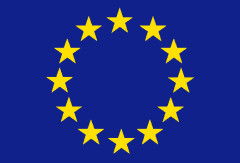Sustainable development in the European Union Monitoring report on progress towards the SDGs in an EU context

Sustainable development objectives have been at the heart of European policy for a long time, firmly anchored in the European Treaties (1 ) and mainstreamed in key projects, sectoral policies and initiatives. The 2030 Agenda for Sustainable Development and its 17 Sustainable Development Goals (SDGs), adopted by the United Nations (UN) in September 2015, have given a new impetus to global efforts for achieving sustainable development. The EU has fully committed itself to delivering on the 2030 Agenda and its implementation through its internal and external polices, as outlined in the reflection paper ‘Towards a Sustainable Europe by 2030’ (2 ).
This publication, entitled ‘Sustainable development in the European Union — Monitoring report on progress towards the SDGs in an EU context (2019 edition)’, is the third in the series of annual monitoring exercises launched by Eurostat in 2017. It is based on the EU SDG indicator set that was developed to monitor progress towards the SDGs in an EU context. The set was adopted in May 2017 by the European Statistical System Committee and most recently reviewed in late 2018 (3 ) (see Annex II on page 356 for the complete set of indicators used in this report).
This synopsis chapter provides a statistical overview of progress towards the SDGs in the EU over the most recent five-year period (‘short-term’) for around 100 selected indicators. Where data availability allows, the more detailed analyses in the thematic chapters of this report also look at trends over the past 15 years (‘long-term’), to reflect the 15-year scope of the 2030 Agenda.
Indicator trends are assessed on the basis of their average annual growth rate during the past five years. For the 16 indicators with quantitative EU targets (4 ), progress towards those targets is assessed. These targets mainly exist in the areas of climate change, energy consumption, education, poverty and employment. All other indicators are assessed according to the direction and speed of change. Arrow symbols are used to visualise the results of these assessments. The meaning of these symbols is explained in the introduction and at the beginning of each thematic chapter; the overall approach to assessing indicator trends is explained in more detail in the introduction (see page 19).
For each SDG, this synopsis summarises progress in the selected indicators towards the respective goal. This summary is based on an average score for each SDG, which is obtained by calculating the mean of the individual indicator assessments, including the multi-purpose indicators. The method for summarising progress at the goal level based on the selected indicators is explained in the introduction (see page 25).
The findings presented in this publication are based on developments over a five-year timespan. Studies and reports that consider current status (in addition to or instead of trends), different indicators or different timespans may come to different conclusions.
czytaj całość na stronach Eurostat
